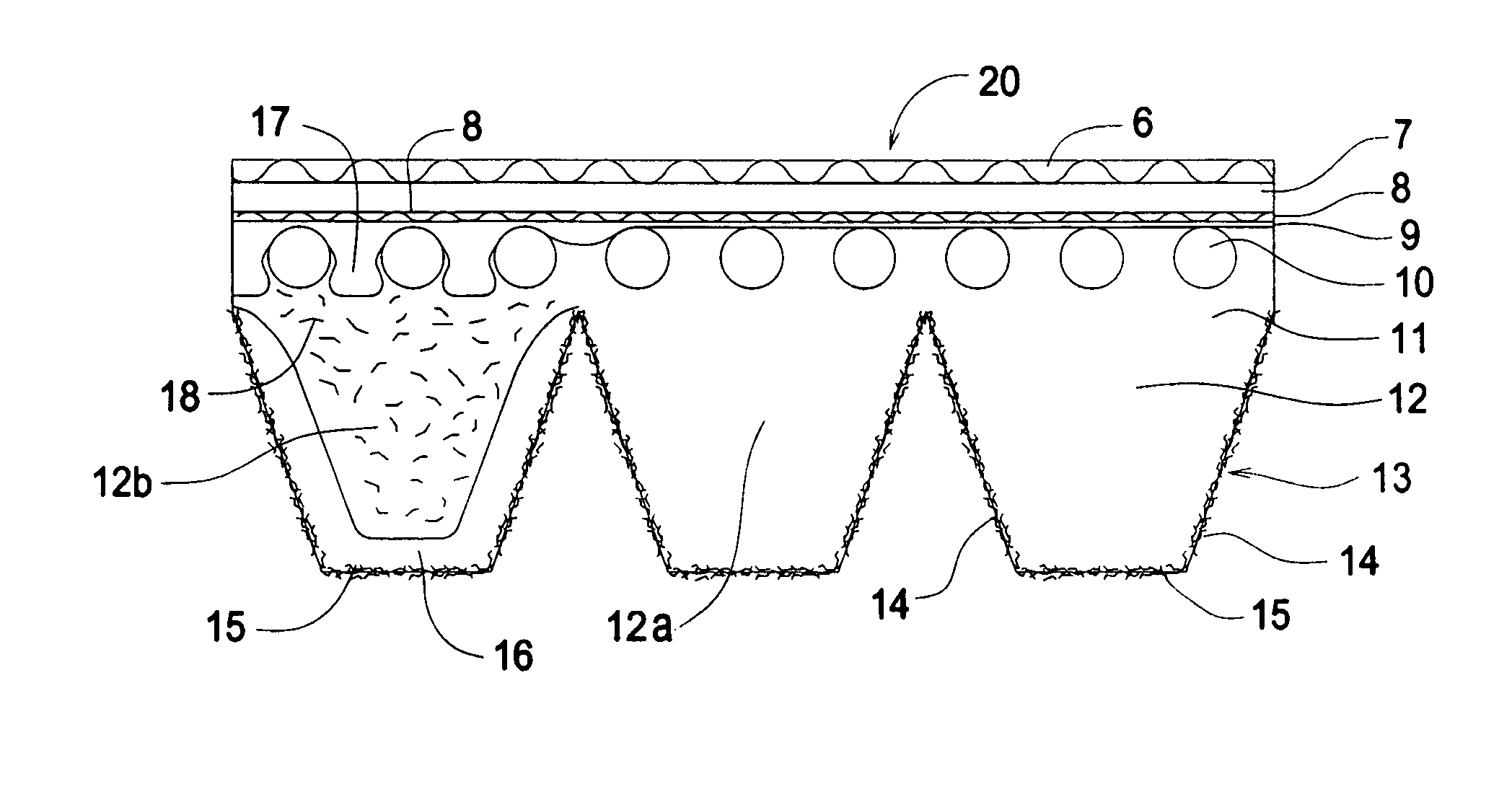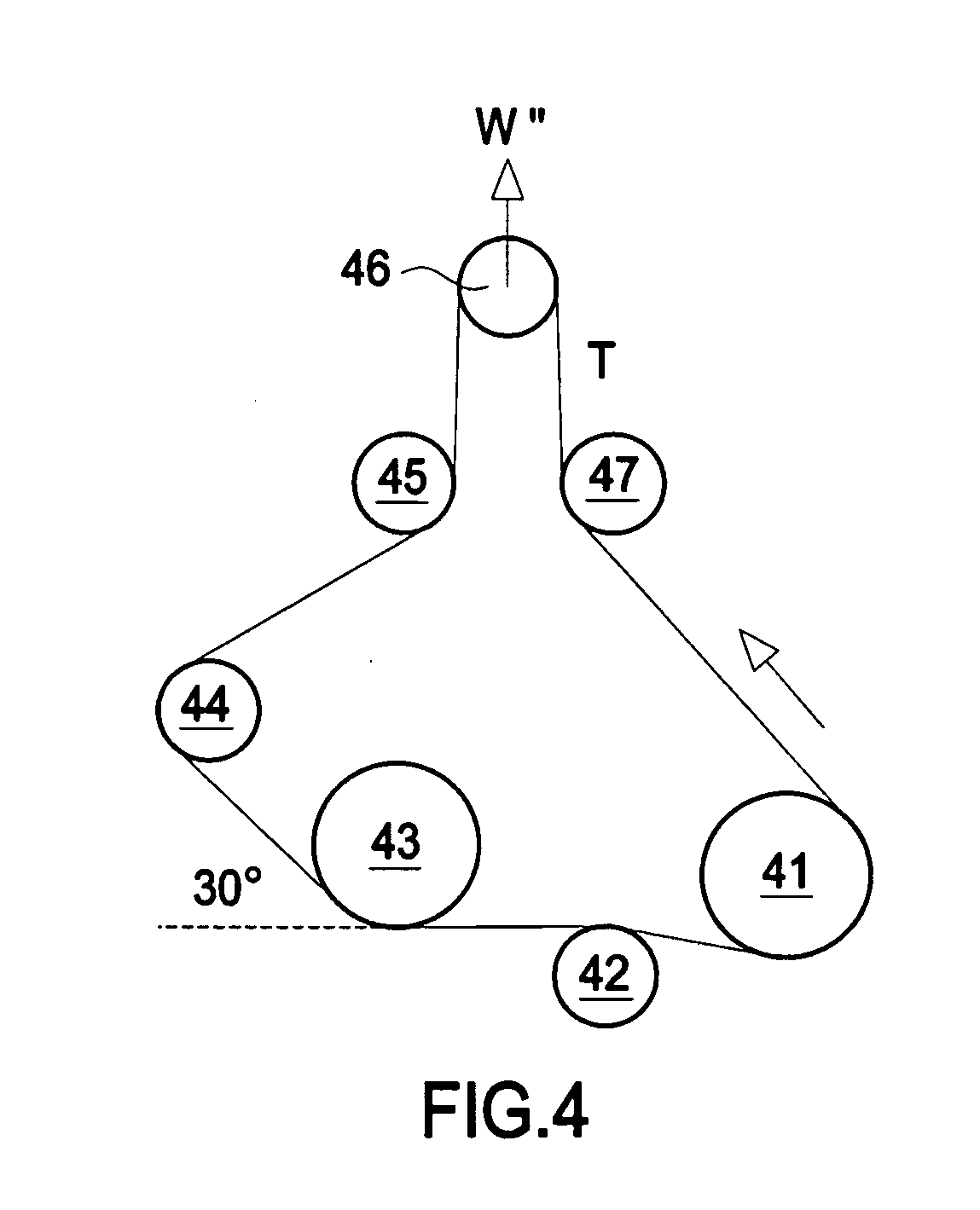Power transmission belt
- Summary
- Abstract
- Description
- Claims
- Application Information
AI Technical Summary
Benefits of technology
Problems solved by technology
Method used
Image
Examples
examples
[0043] The following examples are submitted for the purpose of illustrating the nature of the invention and are not intended as a limitation on the scope thereof.
[0044] The first set of examples illustrate the processing improvements of the inventive belts over the prior art. The test belts comprised an overcord 7, cross-cord 8, gum layer 9, tensile cords 10, a compression section or body 11, and a nonwoven region 15 on a multi-v-ribbed profile as described in FIG. 1. The test belts used EPDM-based elastomeric materials, polyester tensile cord, nylon cross cord, and two layers of nonwoven of various compositions as indicated in Tables 1 and 2. The nonwovens in Tables 1 and 2 were produced under comparable processing conditions by a wet-laid process, with a PVAL binder. The composition percentages reported are based only on the fiber content, ignoring the binder content which comprised from about 15% to about 22% of the total nonwoven weight. For examples 4, 6, and 8, the PVAL binde...
PUM
| Property | Measurement | Unit |
|---|---|---|
| Length | aaaaa | aaaaa |
| Length | aaaaa | aaaaa |
| Fraction | aaaaa | aaaaa |
Abstract
Description
Claims
Application Information
 Login to View More
Login to View More - R&D
- Intellectual Property
- Life Sciences
- Materials
- Tech Scout
- Unparalleled Data Quality
- Higher Quality Content
- 60% Fewer Hallucinations
Browse by: Latest US Patents, China's latest patents, Technical Efficacy Thesaurus, Application Domain, Technology Topic, Popular Technical Reports.
© 2025 PatSnap. All rights reserved.Legal|Privacy policy|Modern Slavery Act Transparency Statement|Sitemap|About US| Contact US: help@patsnap.com



